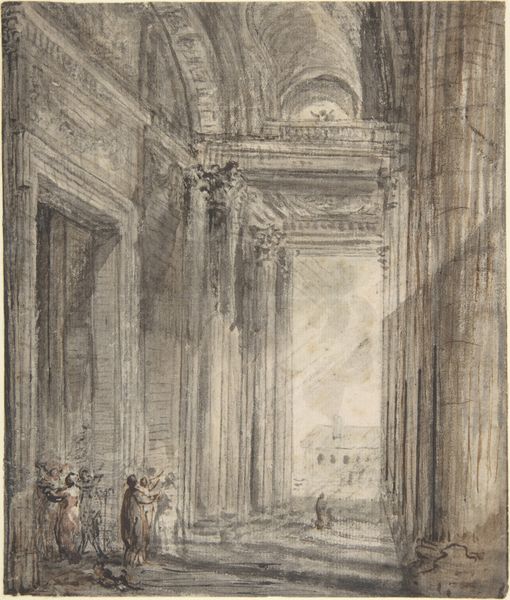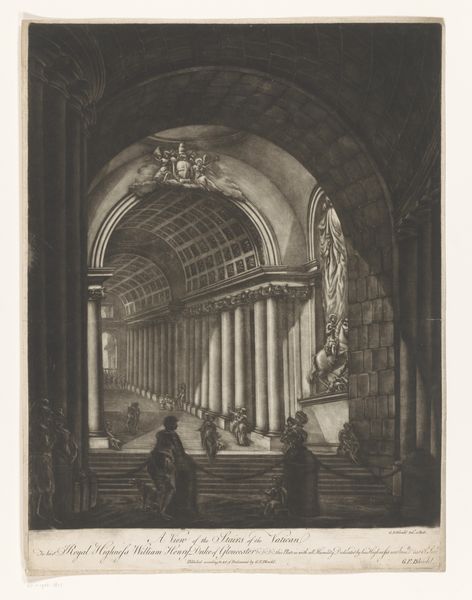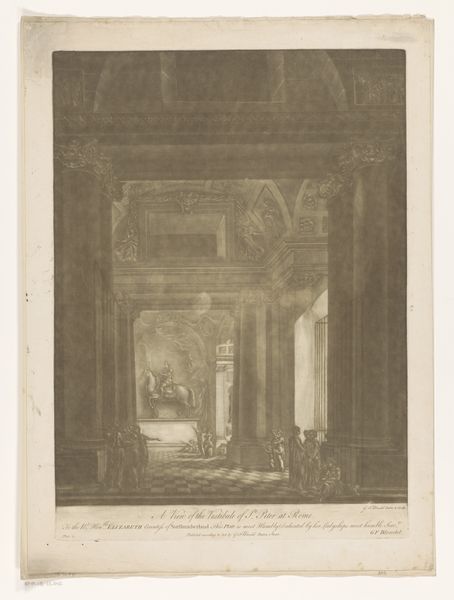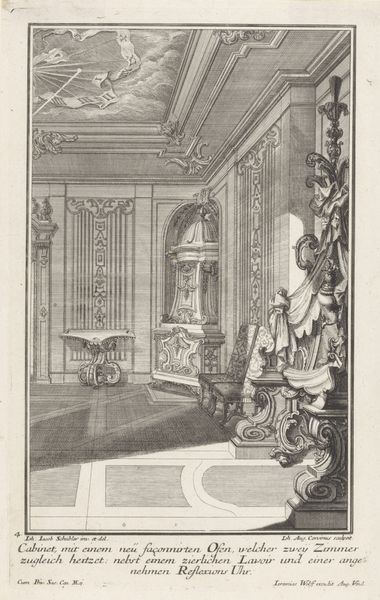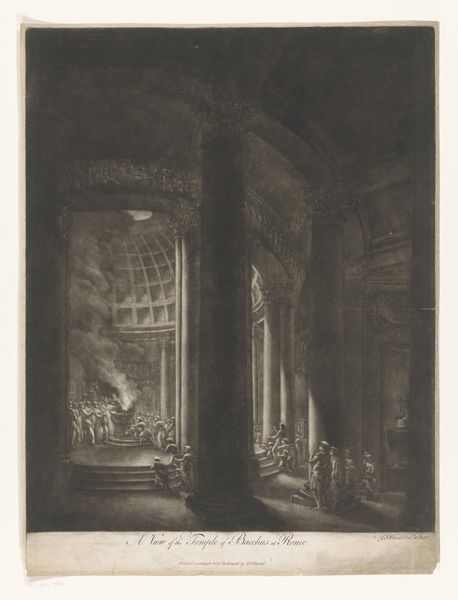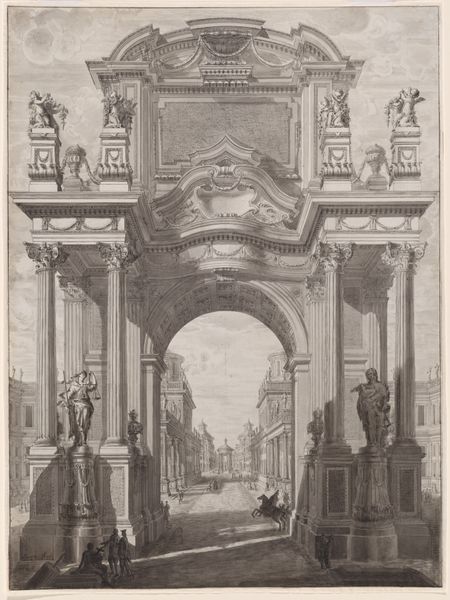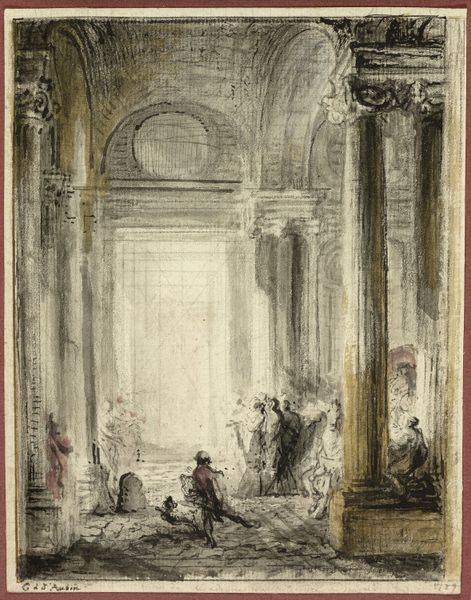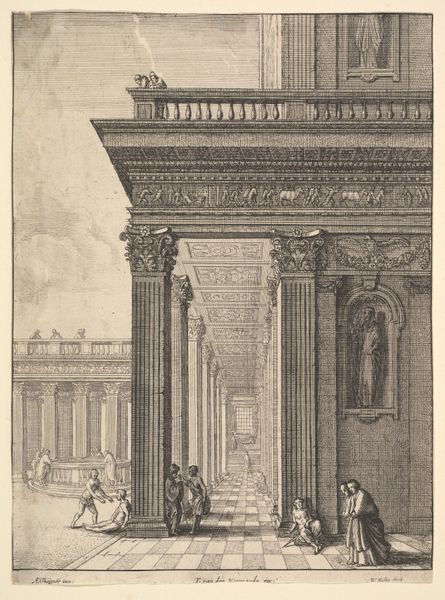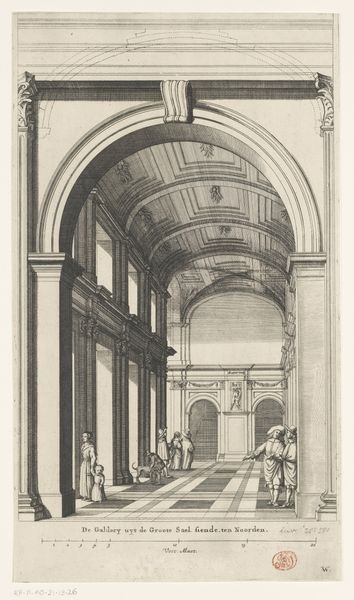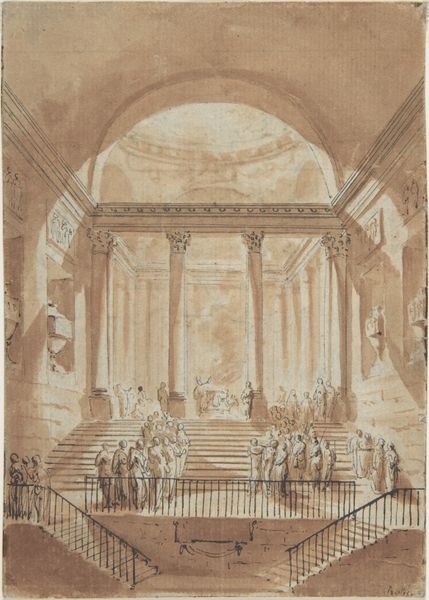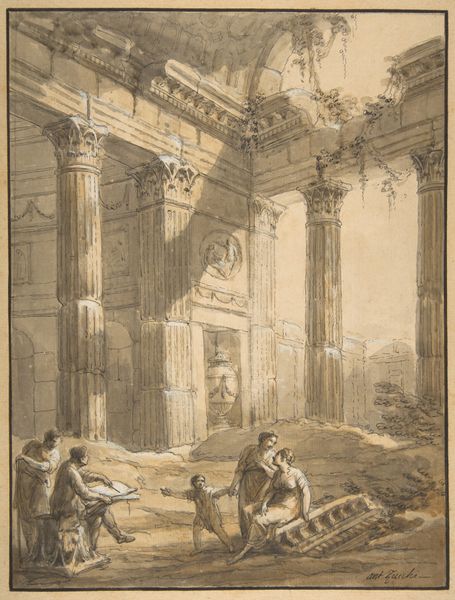
A View of the Vestibule of Santa Maria Maggiore at Rome 1765 - 1767
0:00
0:00
drawing, print, etching, pencil, charcoal, architecture
#
drawing
#
neoclassicism
# print
#
etching
#
sculpture
#
landscape
#
classical-realism
#
charcoal drawing
#
figuration
#
column
#
pencil
#
charcoal
#
history-painting
#
charcoal
#
architecture
#
statue
Dimensions: Sheet: 22 1/4 x 16 in. (56.5 x 40.6 cm)
Copyright: Public Domain
Curator: Standing before us is "A View of the Vestibule of Santa Maria Maggiore at Rome," a work created by Georges François Blondel between 1765 and 1767, now housed at the Metropolitan Museum of Art. This print, combining etching, charcoal, and pencil, presents a majestic architectural scene. What’s your initial impression? Editor: Oh, wow. There's an imposing atmosphere, definitely. It's like the columns are these silent giants, framing something grand and slightly melancholy in the distance. The lighting seems to accentuate this solemn monumentality. Curator: Absolutely. Blondel uses the sharp lines of etching to meticulously capture the vestibule’s architectural details and relies on charcoal and pencil to offer it a dreamlike quality. The strategic use of shadow enhances the dramatic scale of the space. This focus mirrors Neoclassical ideals, evoking grandeur and order. Editor: Neoclassical for sure, but there’s also this undercurrent of Romanticism, isn't there? The tiny figures almost seem swallowed up by the enormity of the architecture, inviting feelings of sublime awe. It’s kind of terrifying and beautiful all at once, right? Curator: Precisely! The composition invites that feeling. Blondel juxtaposes the monumental architecture with the minute human presence, a common technique in depictions of ancient ruins and grandiose architecture. The technique adds to that sense of ephemeral human life against an eternal, powerful past. Editor: I like how you describe that, but I feel so conflicted looking at it, honestly. It’s like a stage set—incredibly constructed, precise, but still, somehow, leaves me feeling strangely disconnected. It captures a historical ideal but struggles to breathe. Does that even make sense? Curator: It makes complete sense! What you're touching upon is a tension inherent in Neoclassical art: the struggle between idealization and lived experience. However, the skillful handling of tonal gradations gives warmth. It softens what otherwise might be a clinical representation. Editor: And in his softness it gives that perfect hint of mystery? A little human emotion breaking through the order and precision of his formalist constraints? The light that could offer something hopeful beyond those overwhelming structures? Curator: It offers an intimate encounter with the weight of history. Blondel provides a contemplative look at humanity's place amidst the grandeur of Rome, if you will, as history fades like that last little spark of light. Editor: So much beauty, so much complexity in one still, quiet moment.
Comments
No comments
Be the first to comment and join the conversation on the ultimate creative platform.
